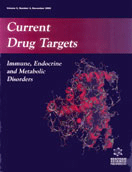Abstract
Host responses to fungi result from a coordinate interplay between innate and adaptative immune system. Neutrophils and monocytes are involved in the non specific clearance of yeasts (e.g. Candida albicans and Cryptococcus neoformans), while T helper 1 type responses are protective via release of interferon γ. By contrast, T helper 2 responses (IL-4 and IL-10 release) correlate with disease exacerbation and pathology. IL-12 production which enhances T helper 1 type responses seem to exert a beneficial role in the course of Candida infection. In particular, its production from neutrophilis may support memory T helper 1 cell responses of the fungus. With respect to anti-Candida vaccines several approaches are in progress, such as use of heat-killed Candida albicans in combination with adjuvants, purified peptides and proteins and immunogenic peptide-lipid conjugates. Furthermore, exogenous IL-12 may play an important role in inducing a T helper 1 anticandidal response, also replacing neutrophils in neutropenic patients. At the same time, granulocyte-colony stimulating factor has exhibited therapeutic efficacy in experimental and human models of fungal infection.
 1
1


















